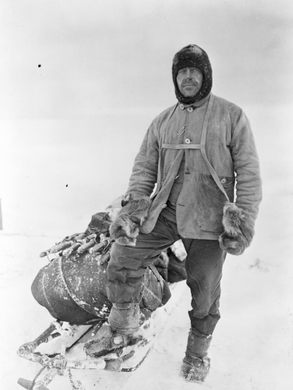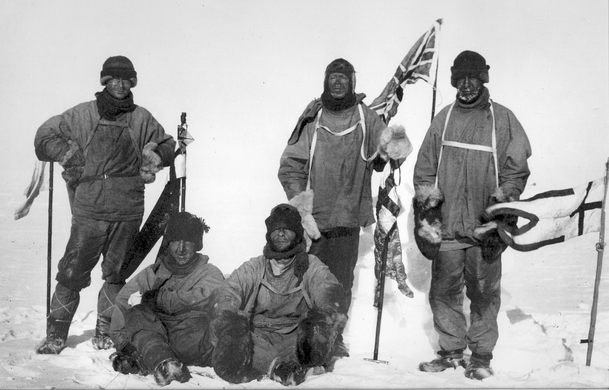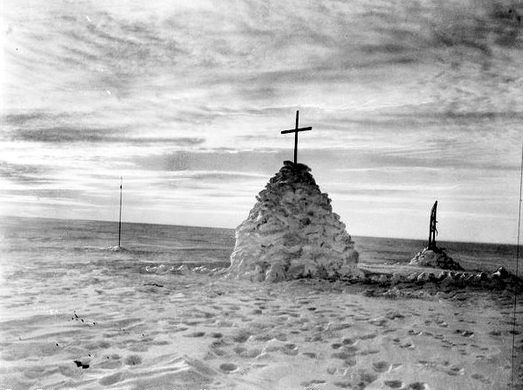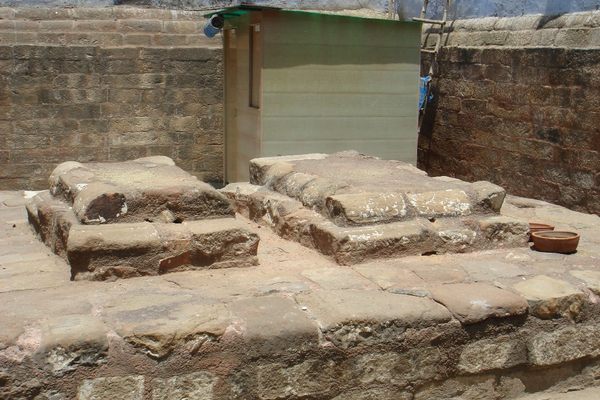The Snow Tomb of Captain Robert Falcon Scott
The bodies of some early polar pioneers are still buried beneath the harsh snows of the Antarctic.
While Sir Ernest Shackleton is often heralded as the hero of polar exploration, he had many contemporaries, among them British naval captain Robert Falcon Scott, who along with four of his men is still buried under the snows of the Antarctic.
In November 1912, on the Ross Ice Shelf in Antarctica, the surviving members of Scott’s Terra Nova expedition were searching for their leader. Scott and his party had vanished into the snows the previous year - never returning from their quest for the South Pole. On November 12th, one of the group, physicist Charles Wright, saw “a small object projecting above the surface” of the snow. It was part of a tent. They had discovered the final resting place of Scott and two of his men, Henry “Birdie” Bowers and Edward Wilson. Scott lay between them, his diary recording their final days: “It seems a pity, but I do not think I can write more,” the last entry ran, “For God’s sake look after our people.” In his final starved, frostbitten days, Scott worried about the financial burden on the families he and his men had left behind.
Edgar “Taff” Evans and Lawrence “Titus” Oates had died earlier on the return journey from the Pole, where the party of five had found to their dismay that they had been bested by the Norwegian explorer Roald Amundsen. Discouraged, they trudged back toward the coast, Evans dying on the descent of the Beardmore Glacier and Oates freezing to death on the Ross Ice Shelf. Oates, wounded and thus concerned he was a burden to the others, limped out of the tent into a blizzard on March 17th and was never seen again. But his noble suicide would not save Scott, Wilson, and Bowers, who by March 29th were all dead in the tent. They had died just 11 miles short of a food depot, but 11 miles in an Antarctic blizzard with -60˚ Celsius temperatures was close to an eternity.
Why it was that Scott and his men perished has been debated ever since the discovery of their bodies, with most scholars pinning at least part of the blame on Scott’s decision-making, while others point to a series of random misfortunes, coupled with atrocious March weather. Only one other expedition had experienced similarly impossible conditions, a three-man team of Wilson, Bowers and Apsley Cherry-Garrard setting off in the Antarctic winter on a quest for Emperor penguin eggs. The three were extraordinarily lucky to have survived; Cherry-Garrard recalled his teeth chattering so violently that they shattered.
The bodies of Scott and his men were not brought back to Britain. Instead, wrote Cherry-Garrard, who had been part of the search party, “We never moved them. We took the bamboos of the tent away and the tent itself covered them. Over them we built the cairn.” This cairn of snow, topped with a solitary cross, was all that marked the remote spot in the Antarctic emptiness which has not been seen for over 100 years. The grave site was quickly buried in drifting snow, while the tent and bodies have been migrating downward into the ice under the weight of accumulating snow and seaward with the ice shelf toward the Ross Sea. A more permanent monument to Scott and his men was erected on Observation Hill near McMurdo Station, but given time, it is likely that, encased deep within an iceberg, the bodies of Scott, Bowers, and Wilson will slowly drift away out to sea.


















Follow us on Twitter to get the latest on the world's hidden wonders.
Like us on Facebook to get the latest on the world's hidden wonders.
Follow us on Twitter Like us on Facebook